those who do not want to bother reading this very long paper, go to the bottom and watch the rebuttal videos, this video will be the bases for free energy like magnetic motors, magnetic windmills, static electricity Motors, and other types of devices that can be ran off of this proven technology. Feel free to drop me an e-mail at the email above or give me a call at the telephone number, if you have any disagreements about this technology being real or not, how much is not the point the point is even if you can get a little energy Harvest then it's a way for you run a step up.
I have shown you videos that people today are harnessing electricity from the sky, but what I would like to cover today is proof that they use these experiments themselves let's start with this article from 1928
REMARKABLE EUROPEAN EXPERIMENTS WITH ATMOSPHERIC VOLTAGE ELECTRICAL DISCHARGES WITH POTENTIALS AS HIGH AS 3,000,000 VOLTS
An article about three German studends who experiment with obtaining electrical energy from the air, the methods and the system they use, and how the electrical discharges are measured.
The above scene shows the remarkable electrical effect which frequently occurs in the Als mountains, where three young German scientists are endeavoring to extract tremendous electrical discharges from the atmosphere. The idea behind these experiments is that man may find a way to disintegrate the atom, and thus unlock a tremendous new source of energy.
BENJAMIN FRANKLIN, fired the imagination of electrical engineers and experimenters all over the world for a century beyond his time, when on an immortal day he demonstrated by means of his kite, that lighting was a natural electrical phenomenon. Every student or electrical ma..ers has at some time or other dreamed of utilizing the gigantic electrical charges which are ever present in the atmosphere surrounding our earth. Several scientist have lost their lives while trying to harness the tremendous electrical discharges in the form of lightning. Last summer and again this summer, three young German scientists, A. Brasch, F. Lange and C. Urban of the University of Berlin, aided by all the latest scientific information as to how to protect themselves, will attempt to measure and chart the atmospheric electrical discharges high up in the Alps.
These daring young scientists found in last summer’s experiments that electrical sparks of great intensity and accompanied with a roar like that of huge cannon, jumped the gap of their apparatas repeatedly, even when no electrical storms were in the vicinity. On several occasions electrical sparks jumped the large gap on an average of one every second for thirty minutes, and these discharges averaged two million volts. A beautiful corona of bluish-green color played around the cable and wire net at night. The cable and net were suspended across the valley between two peaks in the Alps, as the accompanying pictures show. This corona had all the appearances of the Aurora Borealis, that most magnificent electrical display observable in the arctic regions particularly.
In last year’s experiments, the three scientists measured atmospheric discharges having potentials as high as 2,600,000 volts, when the summer electrical stoms were practically over; it is hoped this year within the improved apparatus to measure potentials up to ten or more million volts. I t is known that potentials of from 5,000,000 up to 30,000,000 volts passes to earth from an elevation of 250 ft., and these students of natural electrical phenomena have found a very desirable location in the Alps, where they can suspend between one mountain and adjacent one, a strong iron cable having a length of about 2,000 ft. This cable is about 250 feet above the intervening valley, and from it these daring engineers have suspended a coarsely woven wire net, which serves as an electrical capacity to gather the electricity from the atmosphere. As shown in the pictures, the wire net is supplied with numerous sharp points to aid in collecting the current form the air.
As the accompanying photographs of the actual apparatus and wire cable used last year clearly show, an adjustable spark gap of considerable length is provided. By adjusting this spark gap to various lengths, it is possible to judge the voltage of the discharge wich leaps the gap at any moment. Mr. F. W. Peek, Jr., the well-known American worker in the realm of high voltage measurements, together with other engineers, have provided tabulated data and curves for various lengths of both needle and sphere type spark gaps. As one of the accompanying diagrams shows, it is a simple matter to calculate the voltage when a certain length of gap is used. The engineer first checks the lengths of the gap on the chart; he then follows a line horizontally from the gap length to where in intersects with the angular line on the chart; and from the point of intersection he looks in a visual line downward to a place where the voltage is given. For needle spark gap measurements, the characteristic curve on the chart is practically a straight line, while for sphere gaps the characteristic curve on the voltage versus gap length, is a curved line. Those interested in high voltage measurements by means of the spark gap method can find the voltage-gap tables and charges in the Standardization Rules of the American Institute of Electrical Engineers. According to Mr. Peek’s researches, the voltage er foot of atmospheric electrical discharge is about 100,000, while in laboratory measurements with A.C., transformer high potential discharges, the average voltage per foot of spark was found to be about 150,000 volts. The voltage of a lightning flash may easily be 100,000,000 volts, as Mr. Peek has pointe out in one of his scientific papers.
WHY THE EXPERIMENTS ARE BEING MADE
One of the main reasons why these dangerous experiments are being carried on by the three young German scientists, whose names we have already learned, is because science believes that with a sufficiently hight voltage, it will be possible for man to disintegrate the atom, and in this way make available a tremendous source of power as yet untapped. These experts have calculated that they will be able to obtain electrical energy in sufficient quantity from one of these powerful atmospheric discharges, to equal the Alpha rays obtained from 220 pounds of radium. As we have monitored before, these experiments are of course fraught with great danger, and for that reason the experimenters seek refuge in a special lightning-proof hut, which is located about 600 ft. from the spark gap. When electrical storms are in the vicinity, it is especially important that the scientist keep within their protected fortress, for otherwise they would very probably be killed by a stray electrical discharge.
One of the peculiar things about this whole line of experiment is that the average layman does mot realize perhaps, that there is a high electrical stress in the atmosphere on clear days, as well as when thunder stoms are overhead. This fact has been known for a hundred years and more, and many years, ago measurements of the various electrical potentials at increasing altitudes, were observed and measured by scientifica investigators. There are a number of different ways in which these high electrical potentials found in the atmosphere can be measured: one of these methods involves the use of a calibrated spark gap. In this case the gap is set to a predetermined length, and when a discharge jumps this gap, the engineers know of course from previous experience and measurements, just what voltage is present. Another method of measuring extra high potentials, such as here , required the use of a static volt-meter, which involves the use of a stationary and of a movable or rotary set of metal plates, forcing a condenser, to which an needle is attached. For voltages above 2,000, static voltmeters have been used in a great many American central stations, and they have many desirable and useful characteristics. Of course as the voltage to be measured increases, the space between the quadrant shaped stationary and movable plates in increased and vice versa. The electrostatic field from voltages below 2,000 is not sufficient to warrant the use of a static voltmeter. Another method of measuring high potentials involves the use of the so-called vacuum tube voltmeter.
The general characteristics of the atmosphere electrical discharges, including lightning, have been measured and recorded by one of the newest scientific instruments, knows as the cathode ray oscillograph. By means of this quite remarkable, high voltage scientific apparatus, Mr. Peek, one of the well-known General Electric Company staff of research engineers, has made some very interesting and remarkable discoveries concerning the nature of natural electrical discharges, particularly of lightning discharges. Many people will probably wonder why Mr. Peek and some of his colleagues in the engineering profession, including the three daring German students, Messrs, Brasch, Lange and Urban, play with such dangerous electrical discharges, and why they are at all interested in them. We explained previously why their German are intent on finding out all they can about these tremendous voltages obtained from the atmosphere, while Mr. Peek, we may say, also has a very practical reason for carrying on experiments with these death-dealing bolts of Thor. Mr. Peek has been for many years intent on finding out what causes the huge insulators on long distance, high potential transmission lines to break down when electrical stoms break loose over these regions.
And they were not the only ones to do these experiments, of course we can always mention Nikola Tesla's radiant energy experiments which is superior to all these other experience being done. But the whole purpose is is can you get electricity from the sky at all. We need to lay this to rest so we know just as solar this is a viable green energy, and why we believe that they don't really mention it at all. And I'm sorry it can't because of lightning,
they have lightning rods and other electronics that protect you from high voltage and redirected where you needed to be. It must be something else so, let's look at another article that proves they did the experiment.
SCIENCE AND INVENTION, FORMERLY ELECTRICAL EXPERIMENTER
An article that reviews Plauson’s elaborate work on the subject of extracting of electrical energy from the atmosphere: methods used for collecting electricity from the upper air, practical details.
For Many Years Electrical Engineers Have Endeavored to Devise Some Means Whereby It Would Become Possible to Utilize the Free Electrical Energy Ever Present in the Atmosphere, But They Were Not Successful, as Every Now and Then an Extra Heavy Surge of Static Current Would Rush Down the Elevated Conductor and Endanger the Lives of the Experimenters, or Else Destroy the Apparatus Connected With It. A German Engineer Has, However, Devised the Somewhat Elaborate Scheme Here Shown in Brief, and He Has Succeeded, at Least so His Report States, in Safely Extracting Several Kilowatts of Electrical Power from the Atmosphere With Metallic Surfaced Balloons, Elevated to a Height of Only 1,000 Feet.
We have previously treated of the extraction of electrical energy from the atmosphere. The difference of electric potential in different parts of the atmosphere, and the difference between the upper air and earth make it a tempting proposition to obtain power from atmospheric electricity. The power would take the form of high potential difference with a discharge almost of a static nature. It has long appeared rather doubtful to conservative engineers, if such a source of power should really be available. Yet when we see the lightning flash, it certainly suggests very high power, even though the total of its energy may be small, on account of the small duration of the discharge It is not to the thunder storm that we look for getting power from the atmosphere, as the subject is now being seriously investigated. A German scientist, Hermann Plauson, has published a very elaborate work on this subject, and has investigated the use of kites, balloons and towers, for the utilization of the high potentials existing in the air at different altitudes, and has studied out the construction of motors to be operated by the peculiar type of discharge which will be obtained, if the projects are successfully carried out.
We will first speak of the methods used for collecting electricity from the upper air. The author cites several German patents. One of them shows the use of a kite balloon. The balloon is shown floating in the air, kite fashion, and from it hangs a great net or aerial for the collection of electricity. The conductor from the aerial leads to the ground station; quite an elaborate description is given of the net-work which the patentee proposes to have covered with needle points. A windlass takes in or pays out cable for the balloon, and the patentee claims that by sending the apparatus to a height of about one mile he will have 225,000 volts to draw upon. He then speaks o a battery of 20,000 cells in series, which will use up to 40,000 to 50,000 volts in the charging. This certainly provides for a reasonable large fall of potential.
But our author discards this idea and first suggests something more permanent. He proposes the erection of towers to be in the neighborhood of 1,000 feet high, or about the height of the Eiffel Tower. At the summit he has his collecting aerial. The appliance consists of a number of copper tubes; within each one he proposes to burn gas lamps, whose products of combustion will reach the aerial, a collecting net-work covering the tops of the tubes. One of his apprehensions is that if rain should wet his connections trouble might ensue, so he proposes a protection at the top in the shape of a great bell-like shield, resembling in his terms “a Siamese pagoda”. He also compares the form of the protection to that of a great petticoat insulator. Another of his difficulties is that he must have his tower insulated from the earth. He, therefore describes a complicated foundation for his structure. He proposes first to pour in at the bottom of the excavation a foundation of simple concrete. On this he places a layer of asphalt, and then a layer of cast glass, three to ten feet thick, and then comes a reinforced concrete foundation, to which the metallic foot of the tower is to be anchored. This foundation must rise at least seven feet above the ground level, and is to be boarded in on all sides to protect it from moisture. The author’s idea s to erect a number of these towers connected by a horizontal cable, to which the aerials for collection of potentials are secured.
The author strongly advocates balloons as collectors of the electric power of the air. These he depicts covered with spots. These spots indicate areas to be variously coated and prepared to collect potential from the atmosphere.
In the first place he describes the balloon as made of thin metallic leaf supported by internal ribs. Steel wires silver-plated, copper-plated, or aluminum-coated, run from the balloon to the pendant or junction ring. To this ring the tether cable is attached and runs to an insulated windlass on the surface of the earth. The balloon is to rise to an altitude varying from 300 feet to three miles.
The coating of the spots is to be of the thinnest amalgam, of mercury and gold, or zinc, or even polonium, perhaps only 1/2500 inch thick. All over the upper face of the balloon are numberless metal points. To prepare the needle-like wires, they are collected into bundles and are treated electrolytically in a bath, so as to be dissolved in part. This gives a sharp point and roughened surface, all adapted for collecting the electric energy. The points may be of copper, steel, or some hard metallic alloy. After this corrosion. As it may be termed, the wires are plated with gold or other of the so-called noble metals. It is advised that polonium or radium salts be added to the plating bath.
Dr Plauson devotes many pages of his book to describing his motor. This is a rotary motor including a stator and rotor and its peculiarity is that it contains no coils, develops no electromagnetic field properly speaking, but works by static excitation. One typical arrangement is shown in our illustration. The stator plates and rotor plates are concentric with each other, representing segments of cylinders. The alternation of negative and positive charged plates produces the rotation. In the connections there is included a safety spark gap to take care of dangerous potentials. Inductances and capacities are also used and indicated. It was found that the plates heated, owing to the Foucalt currents, and to overcome this, several methods of subdividing the stator and rotor plates, are described by the author.
The whole subject is quite captivating, and it really seems as if the utilization of the electricity of the air may be almost in sight. It would seem possible to carry out experiments in this direction by means of the Eiffel Tower, but of course, the trouble here is that the tower is grounded, and perfect insulation of the collecting surface is absolutely essential.
And now our author gives us some practical details. He says that on the Finland plains he carried out experiments with a balloon made of aluminum leaf with collecting needles of amalgamated zinc with a radium preparation as an ionizer. The surface of the balloon was sprinkled over with zinc amalgam. It was sent up to a height of 300 meters, early 1,000 feet, and was held by a copper-plated steel wire. A constant current of 1.8 amperes at an average of 400 volts potential difference was obtained. This gave nearly three-quarters of a kilowatt, or close to one horsepower. The collector of the balloon insulated from the earth showed a tension of 42,000 volts. By sending up a second balloon with an antenna to the same height at a distance of 100 meters from the first balloon, a current of over 3 amperes was obtained. Then by putting into the circuit a large condenser, whose capacity was equal to the surface capacity of both balloons, and of the antenna connections, the current rose to 6.8 amperes with about 500 volts mean tension. By the use of these two balloons, he eventually ran up the power to 3.4 kilowatts.
SCIENCE AND INVENTION, FORMERLY ELECTRICAL EXPERIMENTER
An article about Plauson’s invention: a system that will deliver current that can be used for industrial purposes.
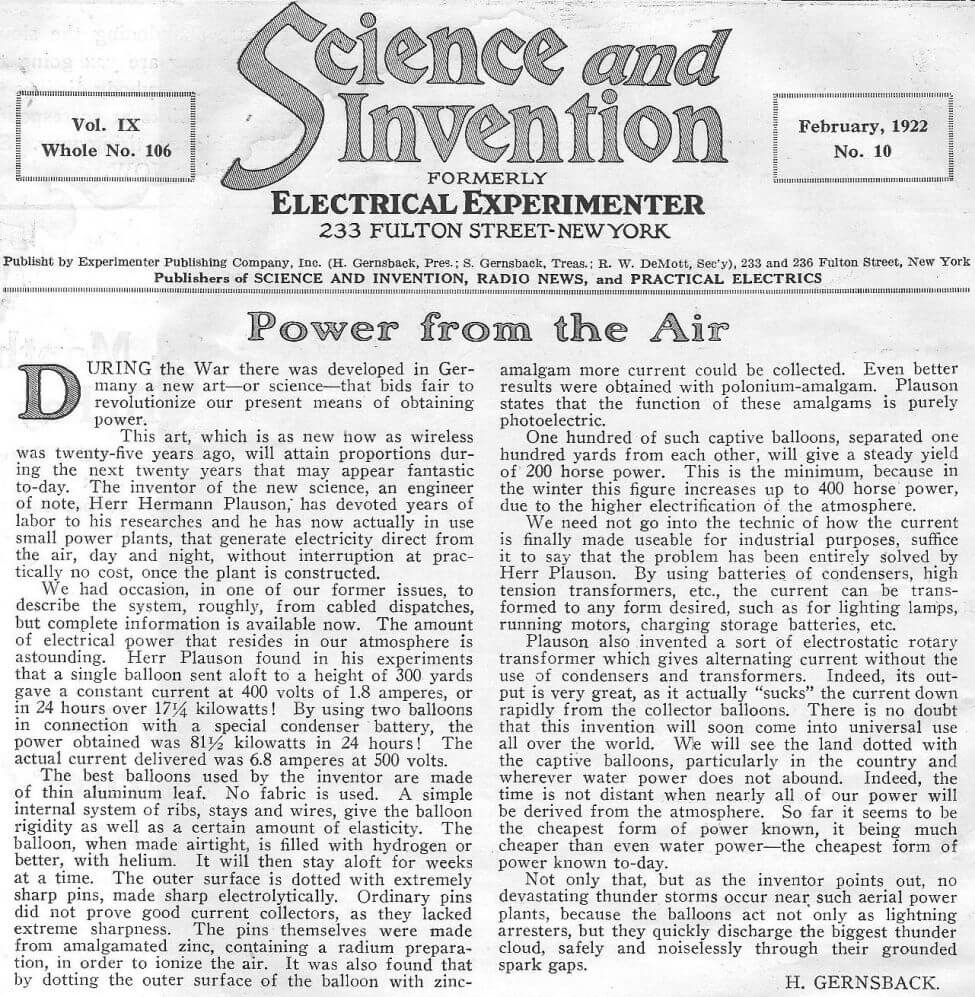
During the War there was developed in Germany a new art – or science — that bids fair to revolutionize our present means of obtaining power.
This art, which is as new now as wireless was twenty-five years ago, will attain proportions during the next twenty years that may appear fantastic today. The inventor of the new science, an engineer of note, Herr Hermann Plauson, has devoted years of labor to his researches and he has now actually in use small power plants, that generate electricity direct from the air, day and night, without interruption at practically no cost, once the plant is constructed.
We had occasion, in one of our former issues, to describe the system, roughly, from cabled dispatches, but complete information is available now. The amount of electrical power that resides in our atmosphere is astounding. Herr Plauson found in his experiments that a single balloon sent aloft to a height of 300 yards gave a constant current at 400 volts of 1.8 amperes, or in 24 hours over 171/4 kilowatts! By using two balloons in connection with a special condenser battery, the power obtained was 811/2 kilowatts in 24 hours! The actual current delivered was 6.8 amperes at 500 volts.
The best balloons used by the inventor are made of thin aluminum leaf. No fabric is used. A simple internal system of ribs, stays and wires, give the balloon rigidity as well as a certain amount of elasticity. The balloon, when made airtight, is tilled with hydrogen or better, with helium. It will then stay aloft for weeks at a time. The outer surface is dotted with extremely sharp pins, made sharp electrolytically. Ordinary pins did not prove good current collectors, as they lacked extreme sharpness. The pins themselves were made from amalgamated zinc, containing a radium preparation, in order to ionize the air. It was also found that by dotting the outer surface of the balloon with zinc-amalgam more current could be collected. Even better results were obtained with polonium-amalgam. Plauson states that the function of these amalgams is purely photoelectric.
One hundred of such captive balloons, separated one hundred yards from each other, will give a steady yield of 200 horse power. This is the minimum, because in the winter this figure increase, r.p to 400 horse power, due to the higher electrification of the atmosphere.
We need not go into the technic of how life current is finally made useable for industrial purposes, suffice it to say that the problem has been entirely solved by Herr Plauson. By using batteries of condensers, high tension transformers, etc., the current can be transformed to any form desired, such as for lighting lamps, running motors, charging storage batteries, etc. Plauson also invented a sort of electrostatic rotary transformer which gives alternating current without the use of condensers and transformers. Indeed, its output is very great, as it actually “sucks” the current down rapidly from the collector balloons. There is no doubt that this invention will soon come into universal use all over the world. We will see the land dotted with the captive balloons, particularly in the country and wherever water power does not abound. Indeed, the time is not distant when nearly all of our power will be derived from the atmosphere. So far it seems to be the cheapest form of power known, it being much cheaper than even water power—the cheapest form of power known to-day.
Not only that, but as the inventor points out, no devastating thunder storms occur near such aerial power plants, because the balloons act not only as lightning-arresters, but they quickly discharge the biggest thunder cloud, safely and noiselessly through their grounded spark gaps.
This is an original German version. You can find Atmospheric Electricity by Herman Plauson in English on
CONVERSION OF ATMOSPHERIC ELECTRIC ENERGY
Filed Jan 13,1921
H. Plauson
1,540,998
H. Plauson
1,540,998
Click images to see bigger version
PROCESS AND APPARATUS FOR CONVERTING STATIC ATMOSPHERIC ELECTRICAL ENERGY INTO DYNAMIC ELECTRICAL ENERGY OF ANY SUITABLE HIGH PERIODICITY
157,263
Patent specification
Convention Date (Germany): November 13, 1919
Application Date (in United Kingdom): January 10, 1921
Complete Accepted: July 10, 1922
Patent specification
Convention Date (Germany): November 13, 1919
Application Date (in United Kingdom): January 10, 1921
Complete Accepted: July 10, 1922
Click images to see bigger version
Download PDF version of Conversion of Electrostatic Conversion to Electrodynamic by H. Plauson
shimmers the common debate on why they do not use atmospheric electricity it is already a proven technology, but due to lightning strikes, those unpredictable lightning strikes they closed down the idea of ever Hunters electricity from the sky besides it's too big and bulky for Mass uses. Of course we're not trying to use it or mass uses just single home uses to replace those expensive soler's they love so much to something so cheap and inexpensive that it is the problem itself.
Rebuttal,
it's time for a rebuttal let's see someone who's using the very technology itself, and remember you've probably seen this before but it is the best evidence



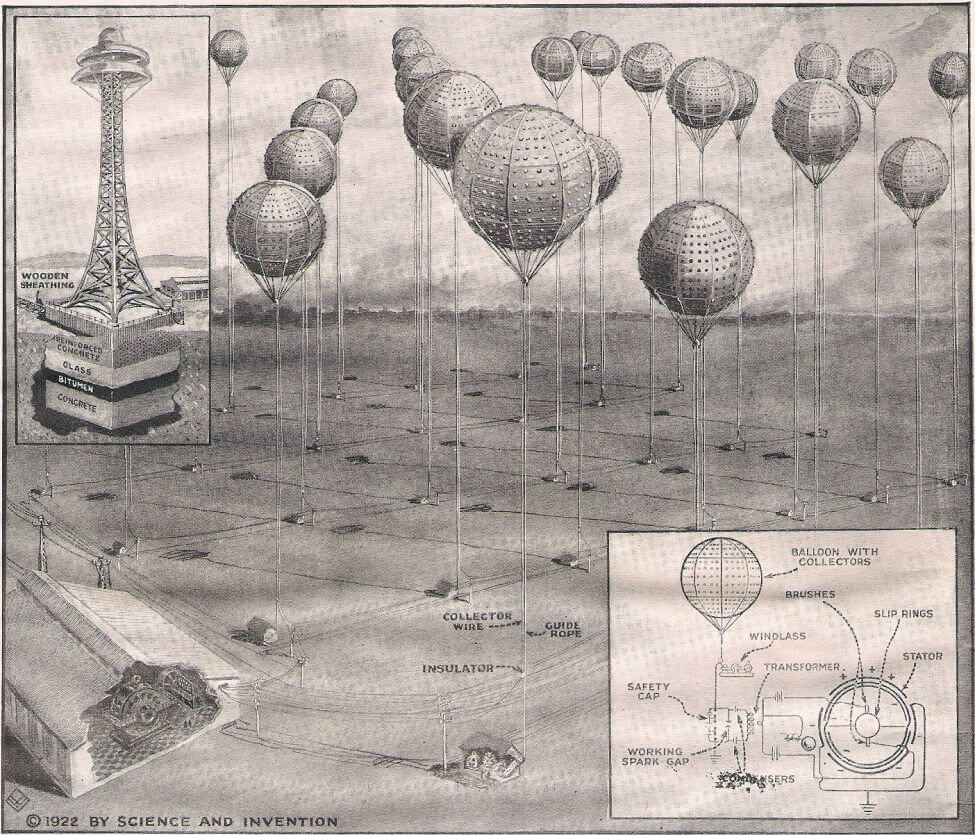
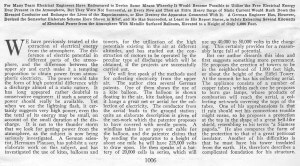
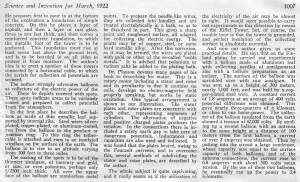
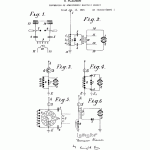
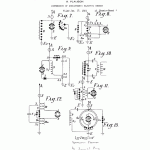
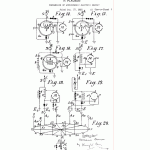
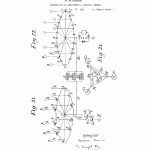
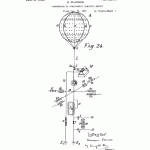
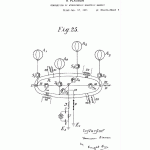
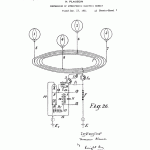
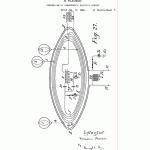
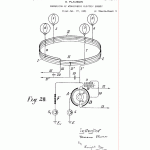
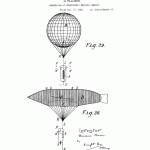
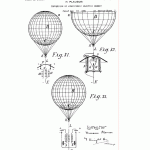
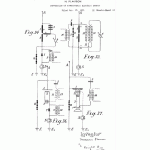
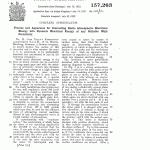
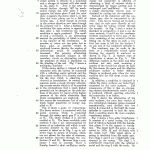
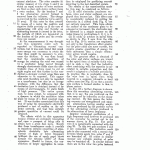
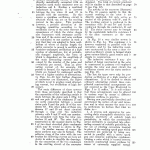
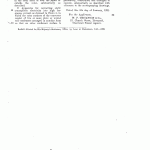
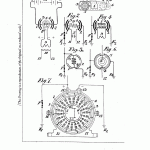
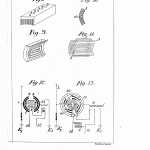
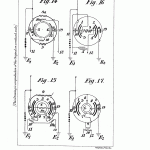


No comments:
Post a Comment